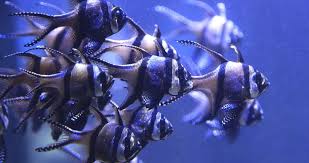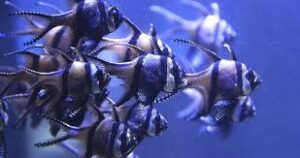Exploring Dragon Stories in Traditional Chinese Theater and Opera
Dragons (龙 – Lóng) have been central figures in Chinese mythology, folklore, and artistic traditions for centuries. Their presence extends beyond literature and visual arts into traditional Chinese theater and opera, where they symbolize power, wisdom, protection, and supernatural forces. In classical Chinese operas and stage performances, dragons appear in mythological tales, historical narratives, and supernatural dramas, bringing life to age-old legends through elaborate costumes, intricate performances, and symbolic storytelling.
This article explores the role of dragons in traditional Chinese theater and opera, delving into their symbolism, famous dragon-themed plays, performance techniques, and their influence on cultural heritage.
1. The Symbolism of Dragons in Chinese Opera and Theater
Chinese theater, particularly Peking Opera (京剧 – Jīngjù), Kunqu Opera (昆曲 – Kūnqǔ), and regional operatic forms, incorporates dragons in various symbolic ways. Unlike Western depictions of dragons as fearsome creatures, Chinese dragons are regarded as auspicious beings, often associated with:
- Imperial authority – The dragon symbolizes the Son of Heaven (天子 – Tiānzǐ), representing the Chinese emperor’s divine rule.
- Spiritual power – Dragons are seen as protectors of deities and celestial beings, capable of shaping fate and controlling nature.
- Mystical wisdom – Many plays depict dragons as guardians of hidden knowledge, magical artifacts, or supernatural abilities.
- Transformation and transcendence – Some stories feature characters who turn into dragons as a symbol of their spiritual elevation.
Because of these symbolic meanings, dragon imagery is incorporated into costumes, masks, props, and movements, allowing actors to embody the dragon’s spirit on stage.
2. Famous Dragon-Themed Performances in Traditional Chinese Opera
A. “The Tale of the White Dragon” (白龙传 – Báilóng Zhuàn)
This classic Kunqu opera tells the romantic and tragic story of a scholar and a mysterious white dragon who transforms into a beautiful woman.
- The White Dragon Maiden falls in love with a mortal but faces challenges from celestial beings who forbid their union.
- The opera showcases elaborate dance movements, symbolizing the dragon’s fluidity and grace.
- Performers use water sleeves (水袖 – Shuǐxiù) to mimic the dragon’s flowing body and transformation sequences.
This play highlights the conflict between fate and love, a common theme in Chinese mythology.
B. “The Dragon King’s Daughter” (龙王女 – Lóngwáng Nǚ)
In this famous Peking Opera piece, the Dragon King’s daughter defies the will of her father, the ruler of the Eastern Sea, to help a kind-hearted fisherman.
- The Dragon King (龙王 – Lóngwáng) is depicted as a powerful but stubborn ruler who controls the tides.
- The opera’s fight choreography and underwater setting make use of elaborate staging effects, where actors perform acrobatic “swimming” sequences.
- The dragon’s court is brought to life with intricate dragon-shaped props and shimmering blue silk to represent the ocean waves.
This opera represents themes of justice, mercy, and rebellion against oppressive power.
C. “Nezha Conquers the Dragon King” (哪吒闹海 – Nézhā Nàohǎi)
A well-known opera based on the legend of Nezha (哪吒), a young deity who battles the Dragon King of the East Sea.
- The Dragon King, angered by human defiance, demands human sacrifices to appease his wrath.
- Nezha, a rebellious deity-child, challenges the Dragon King’s authority and defeats him using his magic spear and divine abilities.
- The play incorporates martial arts movements, flying stunts, and fire effects to depict Nezha’s battle with the dragon.
This opera is often performed during festivals as a symbol of courage and justice prevailing over tyranny.
D. “The Eight Immortals Cross the Sea” (八仙过海 – Bāxiān Guò Hǎi)
This classic Taoist opera tells the story of the Eight Immortals (八仙 – Bāxiān), a group of legendary figures, who attempt to cross the Eastern Sea.
- The Dragon King of the Eastern Sea challenges the Immortals, leading to a battle of magical abilities.
- The play features stunning acrobatics, with performers using ropes and special effects to simulate floating above the sea.
- The dragon’s role as a powerful adversary highlights the importance of wisdom, strategy, and cooperation in overcoming obstacles.
This opera emphasizes the triumph of virtue and intellect over brute strength.
3. Theatrical Techniques Used to Represent Dragons
A. Costumes and Masks
Dragons in traditional opera are represented through:
- Elaborate dragon-patterned robes – worn by emperors or celestial beings.
- Dragon masks – used in dance performances or mythological storytelling.
- Golden headpieces with horns and whiskers, signifying a transcendent or divine character.
Performers who portray dragon spirits often wear long, flowing robes with intricate embroidery, representing the dragon’s scales and ethereal nature.
B. Dance and Movements
Dragon movements in opera involve:
- Circular and wave-like motions – mimicking the undulating form of dragons in water and sky.
- Acrobatic jumps and spins – representing a dragon soaring into the heavens.
- Use of water sleeves – actors extend their silk sleeves to create the illusion of a dragon’s shifting form.
C. Special Effects and Props
- Dragon banners and puppetry – Large dragon props are manipulated on stage during battle sequences and supernatural transformations.
- Cloud and water effects – Blue silk cloth is used to simulate oceans and mist, enhancing the mystical feel of dragon scenes.
- Sound effects – Gongs and drums imitate thunder and dragon roars, while traditional Chinese flutes create an ethereal ambiance.
4. The Cultural Legacy of Dragons in Chinese Theater
A. Dragons in Regional Opera Traditions
While Peking Opera is the most internationally recognized form of Chinese opera, regional variations also feature unique dragon performances:
- Cantonese Opera (粤剧 – Yuèjù) – Known for its rich vocal delivery and colorful dragon costumes.
- Sichuan Opera (川剧 – Chuānjù) – Famous for “face-changing” (变脸 – Biànliǎn), where actors switch dragon masks instantly.
- Hunan Opera (湖南花鼓戏 – Húnán Huāgǔ Xì) – Uses folk storytelling and humor in dragon-themed plays.
B. Dragons in Modern Chinese Theater
Modern performances continue to incorporate dragon symbolism but with contemporary storytelling methods:
- Multimedia projections depict dragons as shimmering celestial beings.
- Wire-flying stunts bring the illusion of floating dragon spirits to life.
- Modern adaptations of classic operas reintroduce dragon legends to younger audiences.
Even today, dragons remain a fundamental part of Chinese theater, serving as a timeless symbol of wisdom, power, and cosmic balance.
Conclusion
Dragons have played an essential role in traditional Chinese theater and opera, embodying imperial power, supernatural forces, and spiritual wisdom. From mythological narratives and romantic tales to heroic battles, dragon-themed operas continue to captivate audiences with their grandeur, symbolism, and artistic beauty.
Through costumes, movements, special effects, and storytelling, these performances preserve the rich cultural heritage of China, ensuring that dragon legends remain an eternal part of the theatrical world. Even in modern productions, the dragon’s presence in Chinese opera continues to bridge history, mythology, and artistic innovation, keeping the spirit of these ancient creatures alive for future generations.

